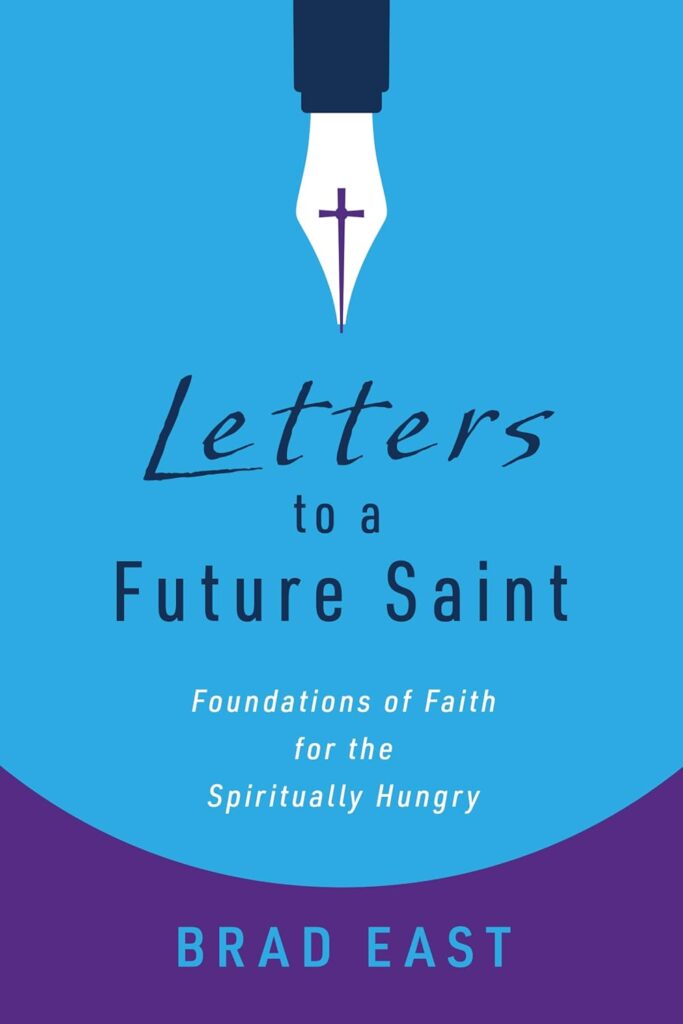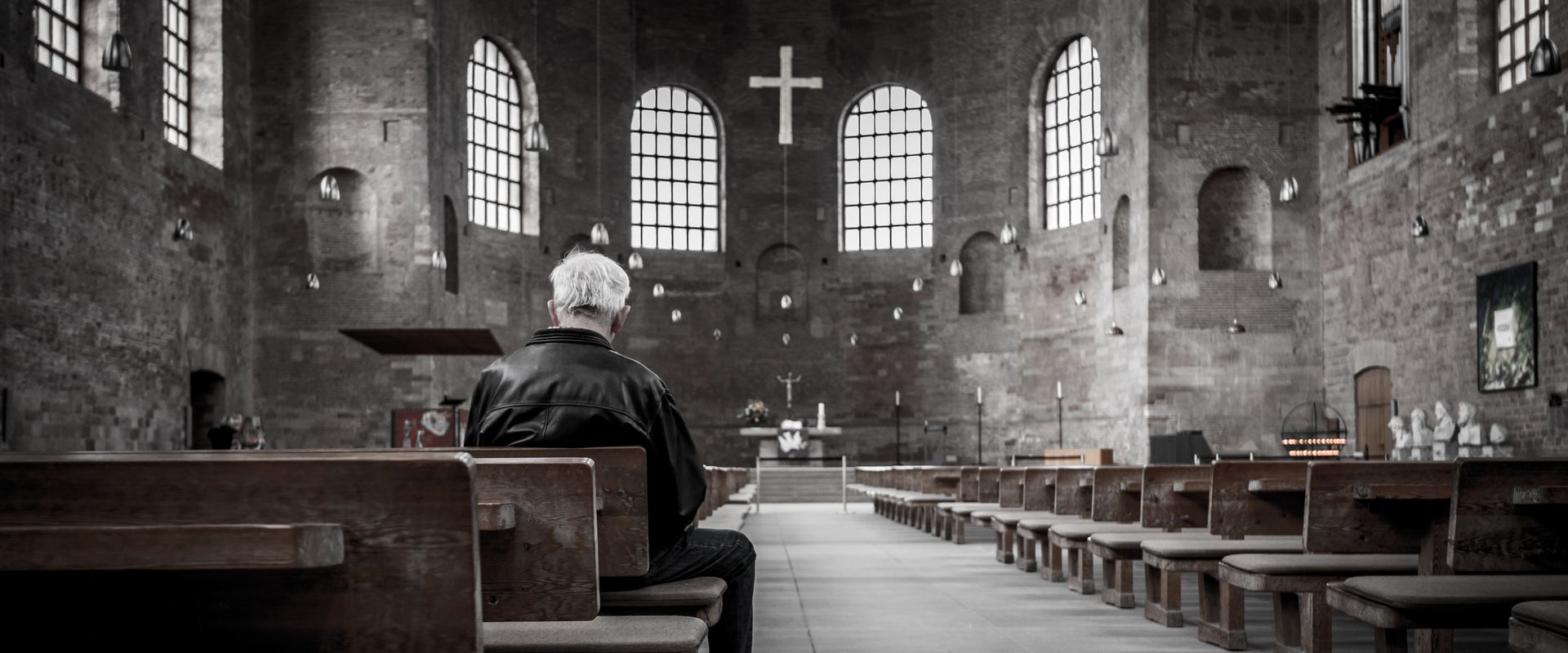
By Brad East
(Eerdman‘s 2024)
“They are like Jesus, that’s true, but Jesus is also pleased to be revealed as like them. And if saints in our timeline show us the possibility of true holiness in sinful women and men, just like you and me, then a whole horizon is opened up for our own lives as we too follow Jesus.”
— Brad East
At Abilene Christian University, Brad East has spent the last seven years teaching theology to undergraduates at his alma mater in Texas. His students, he says, are mostly non-denominational evangelicals from the Bible Belt who want to follow Jesus. But there’s something else about them that may be unexpected: Despite, for most of them, growing up in or around the church, “they don’t know much.”
“Few of them have been catechized, which is the church’s traditional term for learning the ABCs of faith,” explains East. “They’re hungry, though. They’re open to the gospel. They just need someone to give it to them.”
That is what East endeavors to do in the classroom, in the letters he wrote to his godchildren and nephews when they were baptized, and in his new book, Letters to a Future Saint. Like the special notes he wrote his loved ones upon their baptisms, East’s letters to his readers encapsulate the Christian story in simple yet substantive terms. This approach, he hopes, will be a tool that ushers any reader — especially young adults who long for more depth — away from the milk that no longer satisfies and toward the spiritual meat they crave.
East recently spoke with Common Good about this new collection of letters.
How did you land on the letter-writing format?
Letters are typically short, warm, personal, and serialized. They build on one another and they don’t bite off more than they can chew. One of my editors observed that I was trying to write Mere Christianity in the format of The Screwtape Letters. As an aspiration, he wasn’t wrong, though I’d not thought to put it that way. In reality, I’d be over the moon if the book were even one percent the quality of that description.
Letters to a Future Saint is simultaneously approachable to the beginner and rich with doctrine and Christian history. How did you determine what to include for the specific audience you had in mind?
A mix of instinct, traditional order of doctrine, and a specific plan for the structure. Mostly the topics addressed in the letters arose organically, almost as if I were really corresponding with a young person curious about Christianity.
The overall plan was always clear to me: Start with Abraham, track the story of Israel, turn back to creation, then ask what went wrong — and then turn to the incarnation, the church, and the Christian life.
The one thing I wanted to avoid was making the book a product of its time. In other words, I wanted to present what Christianity is, not what it seems to be when warped by the hot-button issues of the day. I touch on some of those, but only as much as necessary and only as demanded by the subject at hand.
How can the stories of historical Christians encourage the faith of modern-day believers?
G.K. Chesterton has a famous line where he says, about St. Francis, that it’s not just that Francis is like Christ, but Christ is like Francis. His point is that the arrows point in both directions: Looking to Francis helps some of us, at least, see something about Christ we wouldn’t have otherwise.
I try to help my students see that, in virtue of their baptism, they have joined a people with a very long history — not an ancient, dusty, irrelevant history, but a family history. Through adoption into this family, it’s now theirs, not someone else’s. Just like their biological family, there are unsavory episodes and nasty characters in the mix. But there are likewise rich, beautiful, life-giving stories, faithful examples, and larger-than-life characters worth knowing, loving, and imitating.
Moreover, this family history isn’t limited to the biblical narrative, stretching from Abraham, Isaac, and Jacob to Peter, James, and John. It’s ongoing. It’s unfinished. The church wasn’t founded the day of your birth or mine. Get to know the branches of the true you’re unfamiliar with. You’ll be blown away by the depth of their faith, the breadth of their knowledge, the magnitude of their courage. They are like Jesus, that’s true, but Jesus is also pleased to be revealed as like them. And if saints in our timeline show us the possibility of true holiness in sinful women and men, just like you and me, then a whole horizon is opened up for our own lives as we too follow Jesus in our context.
Which chapter was your favorite to write, or, which do you find yourself still thinking about?
My favorites were about true and failed saints (whether Thérèse of Lisieux or Kijichiro from the novel Silence), about “bad Christians” (i.e., all of us), about the faithful way so many believers have died in the arms of Jesus (I’m thinking here of the late Pope Benedict XVI, whose final words on his deathbed were: “Jesus, I love you!”), and about my and my wife’s many grandmothers — a rambunctious bunch who lived full but difficult lives, and whose “ordinary” holiness is exactly what the rest of us should aspire to.
Many of Common Good’s readers are pastors or ministry leaders. What would you like to tell them?
We Americans surely live in the least churched, least nominally or culturally Christian time in our society’s history. That is a challenge but also an opportunity. So far as I can tell, the fabled “Nones” of the rising generations are not hostile to faith; they’re not angry or bitter New Atheists raging against a god they deride as both fictional and evil. They’re metaphysically open. They’re spiritually curious. But they’re also illiterate, or perhaps postliterate. They live online and on their devices, and the challenge of digital technology for mature faith is great. We would be foolish to underestimate it.
What does this mean? It means it’s a wonderful time to be a pastor. The need is clear, substantial, and demanding. The harvest is plentiful. Who are the laborers willing not only to evangelize but to catechize millions of souls fed little more than empty spiritual calories — often by well-meaning churches, pastors, writers, and “influencers”? Sometimes it’s hard to know what is demanded of the church by the times. That isn’t our problem. Our problem is not the “what” but the “how,” plus the resolve to do the hard work God is calling us to. This book is my tiny contribution to that work, and I hope it can be one among many tools in their ministry kit to bless and equip not only young people but their parents and mentors as well.
This interview has been edited for clarity. Letters to a Future Saint is available from Eerdmans.





